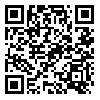Volume 12, Issue 1 (6-2020)
2020, 12(1): 34-39 |
Back to browse issues page
Ethics code: IR.NKUMS.REC.1396.42
Download citation:
BibTeX | RIS | EndNote | Medlars | ProCite | Reference Manager | RefWorks
Send citation to:



BibTeX | RIS | EndNote | Medlars | ProCite | Reference Manager | RefWorks
Send citation to:
Sepehr P, Lashkardoost H, Naimi Ghasabiyan N, Rezapour S, Tebaki B. Assessment of Posture and the Impact of Technical Interventions on Its Improvement in Petrochemical Staff in 2018. North Khorasan University of Medical Sciences 2020; 12 (1) :34-39
URL: http://journal.nkums.ac.ir/article-1-2008-en.html
URL: http://journal.nkums.ac.ir/article-1-2008-en.html
Parvin Sepehr *1 

 , Hossein Lashkardoost2
, Hossein Lashkardoost2 
 , Nayera Naimi Ghasabiyan3
, Nayera Naimi Ghasabiyan3 
 , Shokoofeh Rezapour4
, Shokoofeh Rezapour4 
 , Batool Tebaki4
, Batool Tebaki4 



 , Hossein Lashkardoost2
, Hossein Lashkardoost2 
 , Nayera Naimi Ghasabiyan3
, Nayera Naimi Ghasabiyan3 
 , Shokoofeh Rezapour4
, Shokoofeh Rezapour4 
 , Batool Tebaki4
, Batool Tebaki4 

1- PHD Student, Department of Occupational Health Engineering, School of Health and Safety, Shahid Beheshti University of Medical Sciences, Tehran, Iran , parvin_sepehr@yahoo.com
2- Instructor of Epidemiology Department of Epidemiology and Biostatistics, School of Health North Khorasan University of Medical Sciences , Bojnurd, Iran
3- Instructor, Department of Environmental Health, Faculty of Health, North Khorasan University of Medical Sciences, Bojnurd, Iran
4- Bachelor, Department of Occupational Health, Faculty of Health, North Khorasan University of Medical Sciences, Bojnurd, Iran
2- Instructor of Epidemiology Department of Epidemiology and Biostatistics, School of Health North Khorasan University of Medical Sciences , Bojnurd, Iran
3- Instructor, Department of Environmental Health, Faculty of Health, North Khorasan University of Medical Sciences, Bojnurd, Iran
4- Bachelor, Department of Occupational Health, Faculty of Health, North Khorasan University of Medical Sciences, Bojnurd, Iran
Abstract: (3110 Views)
Introduction: Musculoskeletal disorders are one of the prevalent factors that lead to absenteeism at work. The purpose of this study was to evaluate the physical posture and methods to improve workstations in the petrochemical industry.
Methods: This interventional study was carried out at the Petrochemical Company and according to the type of work and posture evaluation using two methods QEC and LUBA. Ergonomic chair design was done by examining the anthropometric dimensions of the staff and then Posture re-evaluated and data were on paired t-test statistical tests analyzed by SPSS19.
Results: In the QEC method 100% observations of fourth level loading workers in the loading section were in the fourth level and all workers in the bag sewing sector were in the third level. Posture evaluation by LUBA showed that 50% of workers' postures were in Area 3 of the Corrective Action Schedule and 37.5% of Postures in Area 4 of Corrective Action Table 3. Also, after intervention 28% frequency was in third level and 72% in QEC method. The LUBA showed that 20 percent of workers' postures were in Area 3 of the Corrective Action Table and 80 percent of Posters in Area 2 of the Corrective Action Table.
Conclusions: These two methods have shown similar results for postural evaluation. Therefore, it can be concluded that proper application of optimized design will result in improved postures in the workplace. And prevented musculoskeletal disorders.
Methods: This interventional study was carried out at the Petrochemical Company and according to the type of work and posture evaluation using two methods QEC and LUBA. Ergonomic chair design was done by examining the anthropometric dimensions of the staff and then Posture re-evaluated and data were on paired t-test statistical tests analyzed by SPSS19.
Results: In the QEC method 100% observations of fourth level loading workers in the loading section were in the fourth level and all workers in the bag sewing sector were in the third level. Posture evaluation by LUBA showed that 50% of workers' postures were in Area 3 of the Corrective Action Schedule and 37.5% of Postures in Area 4 of Corrective Action Table 3. Also, after intervention 28% frequency was in third level and 72% in QEC method. The LUBA showed that 20 percent of workers' postures were in Area 3 of the Corrective Action Table and 80 percent of Posters in Area 2 of the Corrective Action Table.
Conclusions: These two methods have shown similar results for postural evaluation. Therefore, it can be concluded that proper application of optimized design will result in improved postures in the workplace. And prevented musculoskeletal disorders.
Type of Study: Orginal Research |
Subject:
Basic Sciences
Received: 2019/11/26 | Accepted: 2020/05/6 | Published: 2020/06/28
Received: 2019/11/26 | Accepted: 2020/05/6 | Published: 2020/06/28
Send email to the article author
| Rights and permissions | |
 |
This work is licensed under a Creative Commons Attribution-NonCommercial 4.0 International License. |



